Families sometimes choose between heat or food
For the first week of December, Westcoe Williams lived with his 19-year-old daughter in an apartment on the South Side without utility services because he had an unpaid National Grid bill.
Williams, 58, said after an argument with his wife, he moved out of the home they shared, where all of the bills were in her name. When he attempted to open an account in his name for his new apartment, Williams said a National Grid representative told him he had not had an account in his name for four years and he still owed $3,000 on his most recent bill.
“If you don’t have any electricity or power, it’s hard to eat,” Williams said. “I used flashlights and (ate) a whole lot of subs.” He added that he slept in layers of clothing and blankets.
The advent of winter constantly brings renewed attention to affordability of utilities in Central New York. Bitterly cold days and short daylight hours mean that living without heat or lights can devastate households when residents fall behind on bills. Even still, individuals and families across Syracuse deal with utility shutoffs because they have no other options.
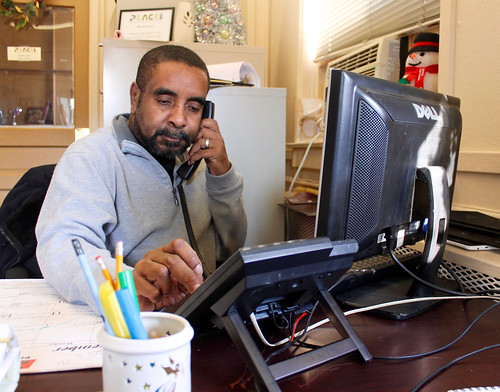
Williams said the representative told him that he must pay at least $1,500 on his bill to get service. Both Williams and his daughter Carol are unemployed, and Williams receives social security disability benefits each month, so that balance seemed insurmountable, he said.
A NATIONAL GRID ADVOCATE
Williams and his daughter volunteer at PEACE, Inc.’s Eastside Family Resource Center. There, he sat down with Mary Beth Basha, a senior consumer advocate for National Grid to receive guidance about his situation. Basha holds hours at various social service and outreach centers across Onondaga County through the week, every week: places like PEACE, Inc., the Samaritan Center, Catholic Charities, McCarthy Manor and others. She sees dozens of customers every day who, like Williams, have mounting bills, face shutoff notices or whose utilities already have been shut off.
“Being an advocate at National Grid gives us a ton of discretion because they don’t want any customers hurt,” Basha said. “So our directive is, do what you have to do to help the customer.”
With Basha’s advice, Williams applied for HEAP, the Home Energy Assistance Program. It is a federal program that helps low-income residents pay to heat their homes. He got power back in his apartment. Residents must fall within certain income guidelines or receive government benefits to be eligible for HEAP. For many Syracusans, however, the aid that HEAP offers is minimal when they are thousands of dollars in debt and face other bills. The average amount of assistance that Onondaga County residents received from HEAP through January 2014 ranged from $253 to $436, according to assistance statistics published by the New York State Office of Temporary and Disability Assistance.
In January 2015, after National Grid shut off service for nearly 277,000 customers statewide for nonpayment in 2014, the New York State Public Service Commission examined its policies regarding billing for low-income customers. In a report issued Jan. 9, 2015, commissioners wrote that while 12 percent of utility customers participate in low-income assistance programs, these customers constituted 21 percent of shutoffs and 31 percent of the $756 million owed by residential customers in 2014 (as of Nov. 30, 2014). Of those shutoffs, 62,266 were in Central New York, more than 10,000 more than the year before, and the highest in almost 10 years.
The commission has since created a proposal that would provide extra benefits to the same customers that receive HEAP automatically, and others provisionally. But this low-income proposal offers little reprieve for many struggling customers.
“What we’re fighting for is the fact that everybody should be entitled to that,” said Gwen Chaffin. She is a community organizer for Syracuse United Neighbors, an organization that aims to improve the well-being of its members through improving Syracuse communities. The group wants to bring attention to the fact that many low-income households will be excluded from this proposal because they are excluded from HEAP.
“A lot of times people apply for HEAP and it closes. Or they’re not eligible for HEAP, they may miss out by making a dollar or quarter too much,” she said. “They may not even know about it.”
Basha said there are many reasons individuals fall behind on their utility bills, and there is no one simple solution for the customers she assists. But, she said, they do all have one thing in common: They are all determined to fix their predicament.
“The people I work with, they’re the ones that really want to do this, they really want to figure out how to make this work,” she said. “And sometimes you just have to say to them, you might just have to move.”
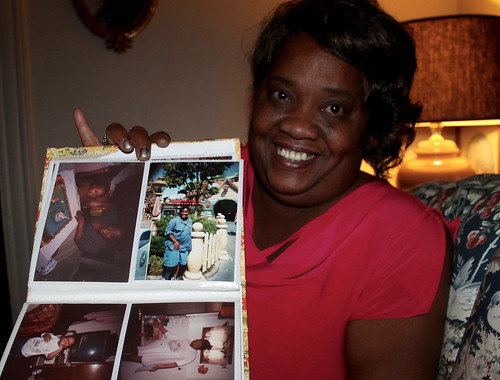
MEET TAMMIE BUSH
If there is one person who knows the reality of moving out of a home because of utility bills and other housing issues, it’s Tammie Bush.
Bush, 54, has lived in seven different apartments around the city of Syracuse since she initially moved here in 1989 from Ossining, N.Y., which is in Westchester County. In her current North Side apartment, where she has lived for two months, Bush takes care of two of her grandchildren and gets by on her disability benefits.
Over the years, Bush has raised seven children: two of her own, and five children of her sister, who died in 1997. That was the reason for her second move in Syracuse; she needed more space. The first move, she said, was because of rising National Grid bills.
“I did it as long as I could, but the NiMo was becoming higher than the rent,” Bush said, referring to Niagara Mohawk, the utility company in New York that was acquired by National Grid. “The landlord was even willing to put the rent down so I would stay, because I was so good. But I just couldn’t.”
She said both her rent and utility bills were around $450 when she lived in her first apartment on State Street in the mid-1990s.
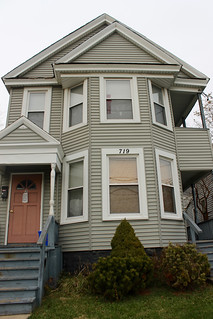
In her fifth place, Bush said she moved when she realized she’d been sharing a utility meter with her upstairs neighbor for six years. When her landlord wouldn’t fix the problem, Bush said she knew it was time to go. In her last place, Bush said she was on a payment plan with National Grid, and she paid $126 a month for her utilities. She endured a shutoff there, she said, because she mailed her payment and it took days to reach the collections department. With young, asthmatic grandchildren in tow, Bush made an arrangement with the building owner, who owned a store next door, to wire the power from his store to her apartment.
“Thank god for the guy that owned the building because we did a wire to the store,” she said. “I had to have a nebulizer and I had to have a fridge. So we made a hole in the wall.”
Her utility struggles have led her to the Eastern Farm Workers Association, a grassroots organization in Syracuse that works to protect the rights of the poor and working class.
Bush volunteers there on Saturdays, when the group canvasses neighborhoods in Syracuse to enroll members. Throughout the week, volunteers do advocacy work on behalf of members, whether it’s negotiating payment plans with National Grid, arranging rides for members to receive medical care or securing food donations for members from the association’s sponsors.
Bush worked with the association to arrange a payment plan for her utilities, and she in turn has been involved in the group’s fight to keep utilities affordable for the poor and working class.
TAKING CARE OF PERSONAL NEEDS
Benjamin Lee, a full-time volunteer with the organization, said he thinks it’s a problem that residents can go broke paying their National Grid bills, while the company makes a guaranteed profit.
“What we’re asking for from our state government is that they prioritize quality of life of the population,” Lee said. “And if that can be achieved and the utility can make a reasonable profit, then kudos.”
The organization’s aims are two-tiered: On one level, members receive benefits like emergency food, clothing, free or low-cost healthcare and childcare, or legal advice; on the other level, the members work as a group to effect change on a broad scale. Lee says the logic behind this system is that if the members’ personal needs are taken care of, then they will have the energy and time to dedicate to activism. “The people whose lives are affected by this need to have a say over the decisions that affect their lives,” Lee said.
So, December 2014, the group made their voices heard. Lee, along with Bush and other members and volunteers, traveled to Albany to visit the Public Service Commission and refused to leave until representatives met with them. The group argued that National Grid should profit less in order to lower rates for everyone. Lee said that the representatives at the meeting said National Grid’s profits were “off the table.”
“They came up with all these grand ideas, but none of them pertained to the poor,” Bush said. “But still, the poor are suffering.”
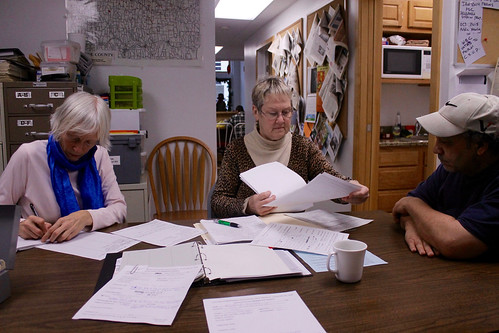
More recently, the group has been outspoken about the low-income proposal the commission has laid out. On Oct. 19, 2015, the commission held a public hearing at Southwest Community Center to gauge residents’ opinions about the proposal. The Eastern Farm Workers Association attended with more than a dozen members and volunteers. Between speakers, the group would chant, “Don’t pick our pockets, take it from the profits!”
Members have even formed a separate committee within the organization, the Committee for a Sane Utility Policy, of which Bush is a member. She doesn’t think the proposal offers a viable solution for low-income residents, especially those on a fixed income or who are receiving government benefits.
“Here’s how it works: you give me a dollar, food stamps is going to take three, social security is going to take two, so who’s really getting any money?” she said. “It’s all right if you give it to us, if nobody else is going to snatch it.”
Each month, many low-income residents have to make a seemingly impossible decision between utilities, eating, feeding their children or medication. And there are any number of justifications for choosing one or another. Basha said in her 15 years working as an advocate, many senior citizens will choose to pay their utility bills and go without necessary medication, because they don’t want to ask for help or because they want to preserve their credit score.
For Williams’ daughter Carol Williams, the choice was between living with her father or living with other family members. She decided to live with her father, even though he didn’t have power.
“It was a learning experience to see what other people go through on a day-to-day basis and I only went through it for a couple of days,” Carol said. “I just really wanted to move into our apartment. I’m more comfortable at home.”
MEET LISA ROSADO
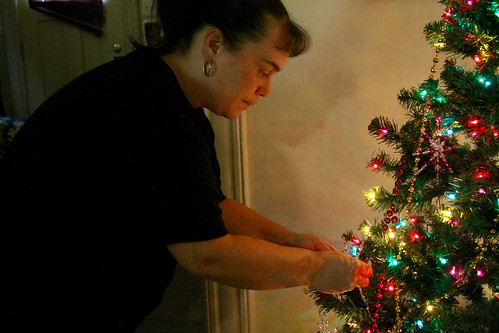
Bush’s work with the Eastern Farm Workers Association introduced her to Lisa Rosado, a stay-at-home mother of two. Rosado also receives disability payments, since she has epilepsy, asthma and chronic back issues. Rosado has experienced her fair share of utility bills; her utilities were shut off for a few days last year during winter. She said she had been paying her bill consistently and was confused about the shutoff.
When she called National Grid, Rosado said a representative told her it was an accident and the company had shut off power to the wrong address. But that incident, she said, let her know that the company did not always hold true to its policy of not shutting off power in the winter.
With Syracuse seeing minimal snow and temperatures above 50 degrees for 14 days in December, it seemed like winter was never coming. December 2015 temperatures broke multiple records. For low-income residents, this meant lower bills because they hadn’t turned on their heat yet. During previous winters, Basha said she could see up to 400 people in one month.
January has seen temperatures and snowfall closer to normal, but according to the National Weather Service, the monthly average temperature was still 1.5 degrees higher than normal as of Jan. 18.
 Throughout the warmer-than-normal December, Bush hadn’t used her heat, but with a downpour of lake-effect snow in the first half of January, she had to warm her home. With additional funds provided by HEAP, Bush has managed her utility bills so far this winter.
Throughout the warmer-than-normal December, Bush hadn’t used her heat, but with a downpour of lake-effect snow in the first half of January, she had to warm her home. With additional funds provided by HEAP, Bush has managed her utility bills so far this winter.
Bush also added that the holiday season brings added stress to already cash-strapped families who want to give their children gifts. Prior to Christmas, Bush said she was billed $259 in the month of November, and paid about $200, because she wanted to be able to save some money for her grandchildren.
In her current Hawley Avenue apartment, photographs of Bush’s children and all the children she has raised adorn the walls and coffee tables. Sunshine comes in through a crack underneath the door. Bush pointed out that the floor there will be icy when it snows. At night, Bush places a blanket or towel underneath the door to keep the freezing air from coming in.
“Most of my heat is going out the door because these landlords are not doing what they need to do to keep the heat in,” she said.
The energy affordability crisis results from the intersection of many societal problems: unemployment, dilapidated housing, poverty and disabilities, as well as the decision between renting and owning. While the Public Service Commission has put forth an effort to address this issue, low-income residents are faced with decisions every day about which bills to pay and which necessities to forgo. Members of the Eastern Farm Workers Association believe the solution is in National Grid’s profits, while some families would be content with just having enough to pay their bills and provide for their families be able to put gifts under the tree.
For Rosado, it boils down to two options:
“We’ve all got choices in life,” Rosado said. “Either have lights and survive or don’t have lights and eat.”
— Article and photos by Ashley McBride, The Stand Staff reporter
 The Stand
The Stand


